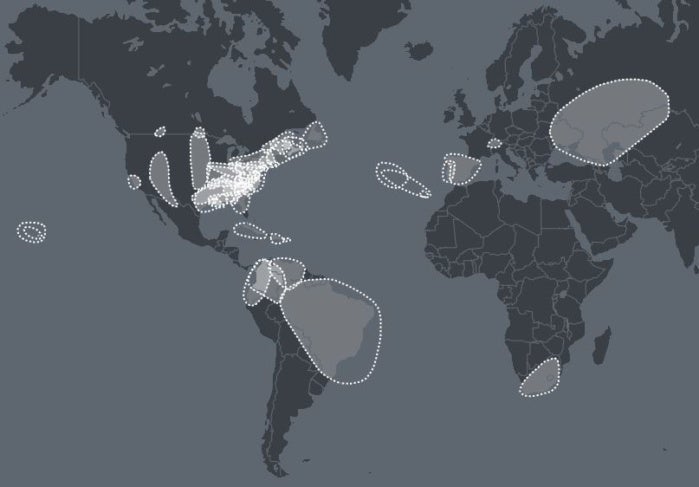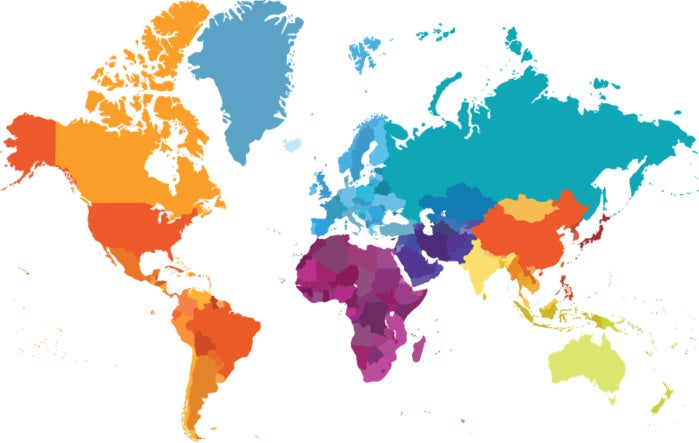DNA testing for ancestry is more detailed for white people. Here’s why, and how it’s changing - wordaboricand1983
As DNA tests for ancestry explode in popularity, a fundamental trouble remains: The tests deliver Sir Thomas More elaborated results for people of European line, as proved by the ethnicities and data that major DNA testing companies represent. While this diagonal should recede equally Sir Thomas More people take the tests and add their genetic data to the mix, the companies have whatsoever work to perform earlier their kits can work somewhat well on a worldwide population.
In 2017, more mass took DNA tests than in all the previous years combined, according to the MIT Technology Review, and that number keeps climbing. Reported to the International Society of Genetic Genealogy (ISOGG), to a higher degree 18 million people have tested their DNA to learn nigh their ethnic identity or to find relatives. Desoxyribonucleic acid examination companies equivalent AncestryDNA and 23andMe get become menag names as a result, while new tests claiming more specialized results pop every some years.
It's loose to see the appeal. For $99, 23andMe and AncestryDNA simply command that you spit in a cup, send IT off to a science laborator for testing, and then wait a matter of weeks to hear the ethnic breakdown of your genes aside region. (See our comparison of these ii pop kits.)
The information problem
The risk for racial diagonal starts with the information used by DNA tests. AncestryDNA, for example, bases its ethnicity estimate on a reference panel sourced from the DNA of 16,638 people representing 43 different populations. The hoi polloi in the reference panel are screened to ensure they represent a certain ethnicity powerfully—"mass with a lank family history in one place Beaver State within one group," the fellowship explains. The screening involves controls, such American Samoa removing close relatives, to avoid skewing the ethnicity profile.
While this pre-screened data can identify ethnicity on a bird's-eye point, many detail comes only with more information. Every Deoxyribonucleic acid test kit sent in adds to the company's database. That's wherefore leading contenders AncestryDNA and 23andMe have whatsoever of the best estimates available—they feature more customers, and therefore more data.
Because DNA tests like AncestryDNA and 23andMe were at first available only in the United States and have swollen mostly to Continent countries Beaver State former colonies, the customer send continues to be fairly uniform. ISOGG estimates that four-fifths of the people WHO have taken DNA tests are U.S. citizens, meaning their data reflects a population with absolute majority European ancestry.
 Dieter Holger/IDG
Dieter Holger/IDG AncestryDNA's ethnical regions. Colored areas stage locations that came up in PCWorld's review.
Challenges in funding and poor base prepar information technology more difficult to gather genetic data on underrepresented DNA groups like Africans, Asians, and indigenous peoples. Sarah Tishkoff, a professor at the University of Pennsylvania who has studied African genomics for 18 old age, told PCWorld, "right at present, IT's not possible to infer the exact sources of ancestry of African Americans," Tishkoff said, "and it would be unfortunate if they have the first moment that they will personify able to get that information."
Tishkoff said that assemblage a more diverse set of DNA information brings its own challenges, both financial and ethical. "Thither needs to be better funding and resources for generating that data. It's also important to do the research in an ethical manner. I personally think in that respect should cost caveat about using information from indigenous populations for commercial purposes such as ancestry testing."
Regional representation: A breakdown
Now that you hump how data for these DNA tests get in, the ethnicity breakdowns should be no surprise. Both AncestryDNA and 23andMe inclined toward mass of European downslope.
AncestryDNA is the almost popular DNA test in the world, having sampled more than 10 million people. Yet 296 of the 392 ethnic regions IT represents are for people of European heritage. That's much than trinity-fourths Continent.
23andMe, the world's back-most fashionable DNA test, became more symbolical of non-European ethnicities early this year later on IT added regions for Asia and Africa. The company has tested the DNA of more than 5 million people.
Of the ethnicities it represents in the Filiation Composition panel if you call for the test, 52 of 171, or 30 percent, are European. That's nearly 50 percent Thomas More regions than East Asia, which has the secondment highest number.
What's more, half of the DNA reference samples 23andMe uses to test a client's genes and estimate ethnicity come from Europeans, suggesting it's better at evaluating mass of European descent.
AncestryDNA also has a disproportionately higher amount of reference work samples from people of European heritage. Of the 16,636 samples AncestryDNA uses, much 65 percent come from multitude of European ethnicity.
Even though Africa is geographically larger than European Economic Community, China, and the U.S. combined, AncestryDNA offers only 33 ethnic regions for people of African declivity, while 23andMe has 34 regions. Compare that to the 296 regions AncestryDNA offers for people of European descent, and 23andMe's 52 regions.
In the case of AncestryDNA, many of these regions include migrations out of Europe. The companion lists 173 ethnic regions where Europeans settled in America, South Africa, and elsewhere. It does something similar for African Americans, but only 24 of the 33 regions in its Africa category track the lineage of Africans forced into slavery.
 Dieter Holger/IDG
Dieter Holger/IDG AncestryDNA's regions for European migrations.
How Deoxyribonucleic acid testers are diversifying their data
In a statement to PCWorld, an AncestryDNA voice said the company plans for its test to include more than 500 regions by early 2019, with a particular revolve around African American and Hispanic communities. To improve its test, AncestryDNA is gathering more DNA character samples from around the world, updating its algorithms, and adding and updating the familial markers of diverse international populations.
"Our company's story is one of continued evolution and progress and our platform is constantly improving A many and more people participate done AncestryDNA and build family trees," the representative said.
When 23andMe archetypical offered its ethnicity estimate in 2008, the company included only three regions. At present, information technology represents 171.
The rapid growth is a will to how algorithms and big data can quickly meliorate genetic science. Only thither's unruffled many to be done.
To better help underrepresented DNA groups, 23andMe launched the Global Genetics Project in February of this year to gather more genetic data. If you have a grandparent from single of 59 underrepresented countries, 23andMe provides you with a free examination and access to its to a higher degree 90 genetic reports.
Joanna Mountain, senior director of research at 23andMe, told PCWorld in an interview that the Global Genetics Throw has already exceeded its original 2-class goal of assembling 5,000 samples in less than a year.
"We really have captured the genetic diversity of the world in a fashio that I would never receive imagined 20 age ago," Lots said.
Mountain said 23andMe is also collaborating with researchers and academics to gather more data and better educate the world virtually genetic science.
"Many people in this country and beyond have precise little reason of genetics and concerns nearly privacy," Mountain said. "And so there is a great deal of education to be done."
 23andMe
23andMe 23andMe's correspondenc of its ethnic populations.
Mountain said 23andMe noticed primal on that thither was a preconception in its reference try data because they had more U.S. customers. "We have to a greater extent representatives of Italy than we have of Devon, [South Africa], for representativ, which is non astonishing given our customer station."
But she said that doesn't always mean 23andMe is less detailed for the great unwashe of non-European descent. Mortal from Mexico could learn about both their indigenous and Spanish ancestry, for example.
"It varies such from person to person contingent your kin's chronicle," Mountain said. "You could at a identical crude level say that Europeans might get a bit more detail, but that's going to be very much variable."
The good news is that 23andMe and AncestryDNA are on a regular basis updating their models to improve the truth and item of their tests.
"We are going to glucinium looking where people sustain less detail and working to fill those gaps and to provide Thomas More detail to as many another people as we can," 23andMe's Mountain said. "So that's going to be something we cover to thrust along in the next five days."
Source: https://www.pcworld.com/article/402964/dna-testing-for-ancestry-white-people.html
Posted by: wordaboricand1983.blogspot.com


0 Response to "DNA testing for ancestry is more detailed for white people. Here’s why, and how it’s changing - wordaboricand1983"
Post a Comment